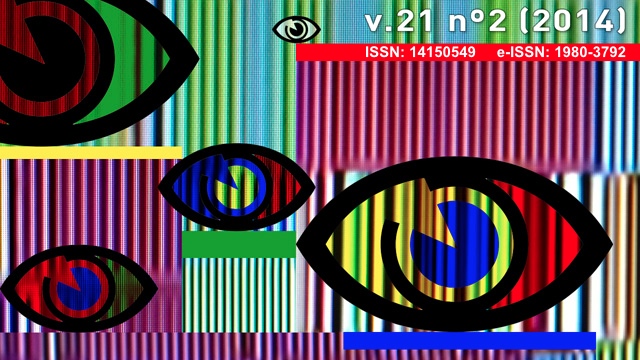Science and technology in the imaginary of The Big Bang Theory: from archetypical images to updating of myths and stereotypes in the "Information Age"
DOI:
https://doi.org/10.15448/1980-3729.2014.2.16758Keywords:
Imaginary, Sitcom, MythodologyAbstract
The Big Bang Theory, a successful sitcom in several countries, creates, reproduces an shares an imaginary that is a mirror of some science and technology aspects that became almost omnipresent in contemporary society. This paper maps the main symbolical elements of the scientific-technological imaginary in the sitcom and analyses their meanings. The goal is better understand the identification process between the serial and its audience and identify some elements that contribute for its success. The research is based on the anthropological concept about the imaginary and in the “mythodology” developed by Gilbert Durand. The results show what archetypes, myths and stereotypes related to science and technology flow in the imaginary of a mainstream audiovisual product and how they are updated in a comedy.Downloads
References
BARROS, Ana Taís Martins Portanova. A saia de Marilyn: dos arquétipos aos estereótipos nas imagens midiáticas. E-compós – Revista da Associação Nacional dos Programas de Pós-Graduação em Comunicação, Brasília, v. 12, n. 1, jan.-abr. 2009.
BERGSON, Henri. O Riso: ensaio sobre a significação do cômico. Rio de Janeiro: Guanabara, 1983
BUCHANAN, Kyle. Why the Newest Superhero Movies Can’t Seem to Make Their Actors Into Superstars. Vulture. Disponível em: http://www.vulture.com/2013/11/why-superhero-actors-arent-superstars-anymorethor-chris-hemsworth.html. Acesso em: 18 mar. 2014.
DUARTE, Elizabeth Bastos. Sitcom: novas tendências. Animus: revista interamericana de comunicação, UFSM, v. 7, n. 13, jan.-jun. 2008.
DURAND, Gilbert. Estruturas antropológicas do imaginário. São Paulo: Martins Fontes, 2002.
______. O retorno do mito: introdução à mitodologia. Mitos e sociedades. Revista FAMECOS, Porto Alegre, n. 1, p. 7-22, set. 2004.
______. De la mitocrítica al mitoanálisis. Figuras míticas y aspectos de la obra. Barcelona: Anthropos, 1993.
______. Passo a passo da mitocrítica. Revista Ao Pé da Letra, Universidade Federal de Pernambuco, v. 14, n. 2, 2012.
EDGAR, Andrew; SEDGWICK, Peter. Teoria cultural de A a Z. São Paulo: Contexto, 2003.
FERRY, Luc. A sabedoria dos mitos gregos. Rio de Janeiro: Objetiva, 2012.
HEISE, Eloá. A lenda do Dr. Fausto em relação dialética com a
utopia. São Paulo: Humanitas/FAPESP/FFLCH/USP, 2001.
HEISE, E. A lenda do Doutor Fausto em relação dialética com a utopia. In: IZARRA, L. P. Z. (Org.). A literatura da virada do século: fim das utopias? São Paulo: Humanitas/Fapesp/FFLCH/USP, 2001. p. 47-56.
MAFFESOLI, Michel. O tempo das tribos. Rio de Janeiro: Forense Universitária, 2010.
______. O imaginário é uma realidade. Revista FAMECOS, Porto Alegre, n. 15, p. 74-82, ago. 2001.
ORTOLAN, Edson Tadeu. História do teatro. Campinas, Brasil: Editora Conquista, 2004.
PROPP, Vladimir. Comicidade e Riso. São Paulo: Ática, 1992.
SETTLES, Burn. On “Geek” versus “Nerd”. Slackpropagation. Disponível em: http://slackprop.wordpress.com/2013/06/03/on-geek-versus-nerd/. Acesso em: 17 mar. 2014.
STEINBERG, Brian. CBS Sets Mega 3-Season Renewal for “The Big Bang Theory”. Disponível em: http://variety.com/2014/tv/news/cbs-sets-mega-3-season-renewal-for-the-big-bang-theory-1201129964/. Acesso em: 12 mar. 2014.
Downloads
Published
How to Cite
Issue
Section
License
Copyright
The submission of originals to Revista Famecos implies the transfer by the authors of the right for publication. Authors retain copyright and grant the journal right of first publication. If the authors wish to include the same data into another publication, they must cite Revista Famecos as the site of original publication.
Creative Commons License
Except where otherwise specified, material published in this journal is licensed under a Creative Commons Attribution 4.0 International license, which allows unrestricted use, distribution and reproduction in any medium, provided the original publication is correctly cited.






